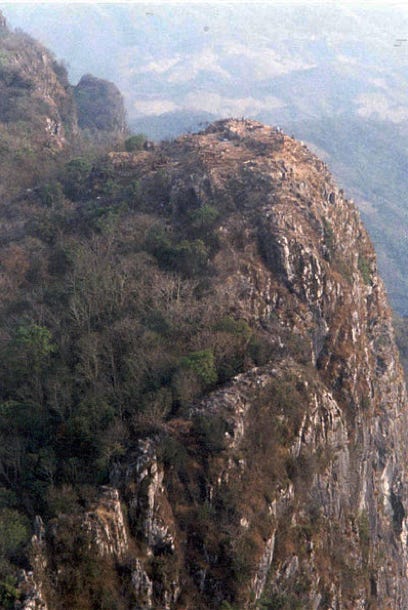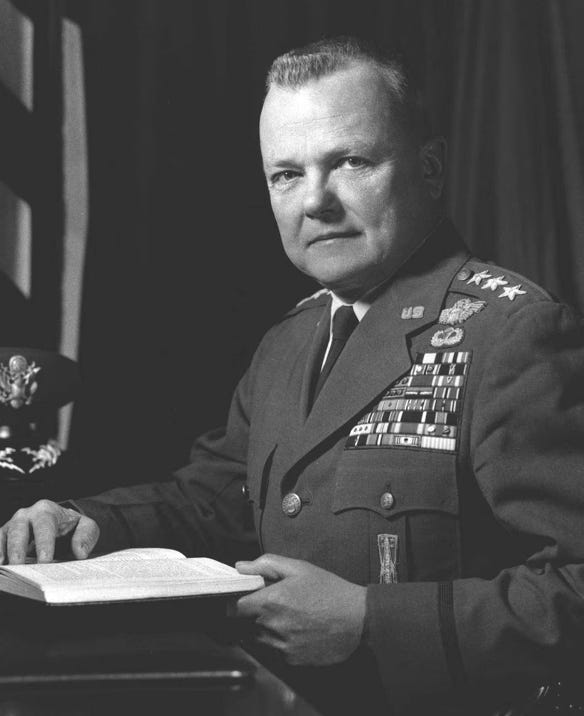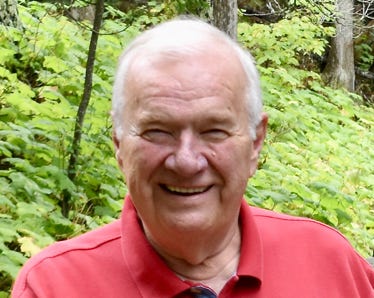DUTY, HONOR, COURAGE, RESILIANCE
Talking Proud: Service & Sacrifice

Lima Site 85, Laos: Exceptional Courage Against Impossible Odds
The Aftermath
In his book, Spymaster: My Life in the CIA, Ted Shackley said, “On March 12 (1968), we bombed the hell out of Site 85 in order to deprive the North Vietnamese of the heavy technical equipment installed there, and we believe we succeeded. Site 85 could have been held, but it should not have been necessary to lose three-quarters of its complement.”
Shackey continued,
“What makes such a loss especially painful is the uncertainty surrounding it. That some of the airmen were killed on the spot goes without saying, but which ones were they, and, more basically, how many were killed? We saw eight bodies in March 1968 photographs, but could some of them have been the bodies of North Vietnamese soldiers? Equally puzzling, could there have been American bodies that the pictures did not show?
“Again, this situation was the classic 'good news, bad news' scenario. The good news was the TSQ-81 was hurting North Vietnam more than a little; thus Hanoi was willing to go to extraordinary lengths to get rid of the electronic menace. The bad news was the Air Force would soon have to dispense with the TSQ-81's services. The time-sensitive, critical question was how soon. The Air Force could bow to the inevitable and evacuate its little force of technicians, but to do this would be to reduce the effectiveness of its all-weather air war against North Vietnam's infrastructure … The key unresolved issue was how much expenditure in aircraft resources would be required to buy the delay, and what this block of time would mean to the effectiveness of the air war against North Vietnam. In recognition of this dilemma and faced with a choice between two unappealing alternatives, the Air Force did what many individuals would do in a similar quandary: they procrastinated."
Ambassador Sullivan briefed Laotian PM Souvanna on March 13, 1968, told him the facilities had been destroyed, and informed him of the American losses. Sullivan reported:
"Souvanna winced at these two items of information, and said they increased the risk that enemy could be able, if he chose, to make some pretty damaging disclosures."
The two men agreed to sit tight and stay quiet to avoid public exposure. Sullivan concluded his report of the meeting with the following:
"Souvanna obviously does not wish to make decision on posture he will take towards potential Communist exploitation of this incident until he knows how damaging their evidence is. He urged me to destroy as much evidence as we can rapidly. Since his position is understandable, I did not repeat nor try to press him one way or another on contingency statements."
On March 14, 1968, General Momyer sent a message to Sullivan:
"I am concerned about the need for a postmortem analysis on the loss of Site '85. In terms of assessing whether future sites should be established, I believe it is important to determine how a relatively small force was able to take such an allegedly well-defended installation. No indications have been received here as to what efforts, if any, were made by local defense forces on site to defend the installation, especially in view of clear indications of an impending attack. Your views on how future sites might be defended in view of experience with Site '85 would be appreciated."
Sullivan replied on March 16. The two messages reflect some elements of finger-pointing for blame. Sullivan agreed a post-mortem should be done, but commented:
"Believe you should understand, however, that enemy forces were not ... 'relatively small'. Our intelligence indicates their numbers between five and seven battalions, with artillery and rocket support, considerably outnumbering local defense forces, which never numbered more that 1,000 men in 12km defensive perimeter which drawn around Site '85."
Sullivan continued to tell Momyer that the embassy had "made it clear from the beginning" that the site could not be defended against a determined and superior enemy force. He also underscored his embassy had been reporting its estimates of the deterioration in the area, and then he said:
"Therefore, its fall should have come as no surprise to anyone.
"The manner in which enemy accomplished its fall is, however, instructive, and should, I think be carefully studied with view to future operations. Artillery fire, at relatively long range, was surprisingly accurate. According to fragmentary reports of survivors, direct hits were scored, very early in the barrage, upon personnel quarters, operations structure, and bunkers. It seems possible that installations were rendered effectively inoperable even before destruction order was given. There may be some lessons in this which should be studied with respect to length of time technical personnel should be required stay at their posts after installation falls within artillery range. In hindsight, it seems to me we should have pulled all technicians out the morning of March 10th, even if this meant losing the last several hours of the installation's capabilities.
"What concerns me most is not the defensive action, but the disruption of preplanned evacuation procedure. It is still not clear why technical personnel went over the cliff to a narrow ledge rather than down trail to chopper pad. CAS and local personnel subsequently went up same trail to installation searching for technicians, so we know trail was travelable, even if under artillery fire. It is also not clear to me how small Vietnamese suicide squad got to installation site, although it seems they must have scaled the cliff which all of us considered impossible."
William Lair noted:
“The 7th Air Force and the director (CIA) told us to ‘hold at all cost' —- those were the words used —- that it was so important that it had tremendous effect on the enemy. They said, ‘We're willing to take that risk because you’re saving lives every day.’ And so we strapped on our seat belts and said, all right.”
Based on my research, I would be a little more strong than Shackley and Lair. I would have said the Air Force chose to keep the site operational for as long as humanly possible, even if that meant sacrificing the men and equipment on the mountain. In short, effective bombing of North Vietnam was more important than the lives of the men on the mountain. The 7th AF was willing to take that risk. That is my personal opinion.
Billy Lair wrote,
“The USAF also knew of the risks of having the site at LS-85, but considered the potential benefits to outweigh the danger. In other words, the personnel were expendable.”
Kenneth Conboy wrote,
“Of the Hmong defenders on the ridgeline, most got out during
the helicopter evacuation. Some 27 others walked off the crest and
trekked 40 kilometres southwest before reaching a friendly garrison. Fallout from the defeat at Phou Phathi continued over the weeks that followed. It was a particularly stinging blow for the Hmong, and a severe loss of face for General Vang Pao.”
James C. Linder, writing The War in Laos: The Fall of Lima Site 85, said,
“The loss of Site 85 was not really an intelligence failure because accurate information about the nature of the situation was available from the start. But it was a failure of command and control and leadership because the local forces did not have full authority for their own defense and depended almost wholly on local irregular troops led by CIA advisers.”
Castle concluded his discussion of events in a surprising way,
“While compelling photographic evidence and the accounts of rescue personnel suggest that many men were killed during the attack, there were no credible U.S. witnesses who could explicitly place names, or even nationalities, on those presumed bodies. Moreover, there is strong evidence to suggest some of the technicians could have hidden themselves in the darkness and survived the attack.”
Such a conclusion leaves the families at a loss. The implication is some may have been captured.
On or about March 14, 1968, Lt. General James Edmundson, USAF arrived at Udorn. At the time, Edmundson was the deputy commander PACAF. Prior to that assignment he had been the director for inspections for the Office of the Assistant Secretary of the Air Force in Washington. The Secretary of Defense instructed him to go to Udorn to find out what happened at LS-85. Ted Shackley, Pat Landry, Tom Clines, and Major Secord met with him. Secord commented that Edmundson was there in an inspector general (IG) role, and wrote, "I unloaded on him." Secord went on to describe what he said:
"I told him the loss of Site 85, which during its existence had directed over a quarter of all bombing missions in North Vietnam, had been a major disaster made worse by the loss of nearly the entire team and the compromise of our TSQ technology and a variety of top-secret encryption systems that we could only assume were now safely on the way to Moscow. Even more infuriating, the loss could have been prevented easily at any of a dozen decision points over the past few months, beginning with Ambassador William Sullivan's inability or disinclination to deal with the problem realistically. Numerous warnings had been sent from the Laos Station to 7th Air Force headquarters in Saigon, to CINCPAC, and to Washington-the CIA and the Pentagon-about the deteriorating status of site defense, and a deaf ear was turned to them all. Instead of allocating assets needed to defend the site properly, or even withdraw from it in an orderly fashion, Washington had ordered us to 'hold the site at all costs.' Even worse, once the enemy attack was underway, critical assets were denied until the site had been rendered indefensible and timely extraction of the team and demolition of the sensitive gear was impossible."
Secord said the general responded that perhaps he had misunderstood the instructions in the fog of battle. Secord responded:
"General, I've been in the field a long time. I've been in a lot of battles. And I'm telling you, this just doesn't happen. It never should happen. It can't happen. But it did. And it's up to you to do something about it."
Secord then recorded in this book: "He and I both knew I was talking about a gross dereliction of duty or worse."
I best stop here. Secord has hit the bottom line. There's nothing more to say except what happened at LS-85 on March 10 and 11, 1968 was a tragedy.
On the other side of the coin, many brave men demonstrated indescribable valor while on that mountain and while flying rescue and search and rescue operations. For that we should hold them in our hearts and keep them on our minds. Above all, be proud of their service and sacrifice.
____________
The 12 USAF-contractor losses, LS-85
CMSgt Richard L. Etchberger, Air Force Cross upgraded to Medal of Honor
LtCol. Clarence "Bill" Finlay Blanton, Bronze Star with Valor "V" upgraded to Silver Star (posthumous)
MSGT. James Henry Calfee, Bronze Star with Valor "V" upgraded to Silver Star with Valor "V" (posthumous)
SSGT. James Woodrow Davis, Bronze Star with Valor "V" (posthumous)
SSGT. Henry Gerald Gish, Bronze Star with Valor "V" (posthumous)
TSGT Willis Rozelle Hall, Bronze Star with Valor "V" (posthumous)
TSGT Melvin Arnold Holland, Bronze Star with Valor "V" (posthumous)
TSGT Herbert Arthur Kirk, Bronze Star with Valor "V" (posthumous)
SGT David Stanley Price, Purple Heart, (posthumous)
TSGT Patrick Lee Shannon, Bronze Star with Valor "V" (posthumous)
TSGT Donald Kenneth Springsteadah, Bronze Star with Valor "V (posthumous)
SSGT Don Franklin Worley, Bronze Star with Valor "V (posthumous)
Click to zoom graphic-photo


